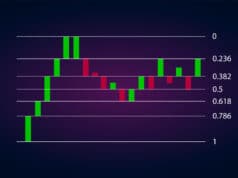They say if you don’t manage your money, it will eventually manage you. Money management forms part of the ‘three Ms’ to trading success (the other two being mind and method).
Unfortunately, information in forex comes from a multitude of sources with no central point of authority. Therefore, people have vastly different views that they publicize on crucial topics, one of which is money management.
As with anything in life, the truth shall always set one free. Thus, this article will uncover the four myths regarding money management in forex and what is more accurate regarding it.
Myth #1: 1-2% risk rule is mandatory
One won’t be hard-pressed to find much of the existing trading literature suggesting a trader risks 1% or 2% of their account on every position. Granted, what this rule does get right is the risk should be small as this figure isn’t so significant.
However, there is one underlying problem with this concept; the recovery rate during a drawdown will likely be a lot slower. Instead, a trader must focus on a quantifiable and constant monetary value to risk, whether that is $10, $100, or $1000 per position.
Although using the percentage model does make one lose less during a losing period, again, the time for them to recover back to breakeven will take much longer. For instance, let’s assume a trader started with $1000 and decides to risk 2% on every position.
At this point, the dollar amount on the line is $20. Let’s also assume that, straight off the bat, they lose $200 off a series of trades, resulting in a new equity of $800. At this point, 2% of this balance is $16 rather than $20.
So, though this model makes the trader lose less during a drawdown, the amount of time to get back to their starting point is increased. However, if they risked a constant amount each time, this recovery period won’t be as long.
Assuming a trader has forward-tested their strategy and knows the essential metrics, they will want to focus more on the monetary value of what they are risking rather than a percentage of their equity.
Myth #2: You can trade profitably without stop losses
Some bold traders will provide seemingly logical reasons why they don’t use stops. It could be something one might get away with on one occasion, but it’s a dangerous habit that will eventually lead to a margin call or a substantial loss of funds.
The biggest dilemma of not using stop losses is the trader cannot accurately position size. They probably do not know the value of a 0.10 lot trade and whether it might be too big for their account or not.
Psychologically, it can also be stressful holding onto a losing position for an indefinite period. This can lead to someone adding more to those orders in the belief the market will go in their favor or hoping not to get margin calls.
Using a stop loss isn’t just about managing losses at a constant figure, but it gets one to see that trading is about losing and winning; it is not only about winning. The stop loss is the framework behind position sizing and risk-to-reward, the latter of which segues us onto the next misconception.
Myth #3: Risk-to-reward does not work
The whole point of trading in the first place is for rewards, though for every potential reward, there is a risk. Granted, just appreciating risk-to-reward alone does not instantly make someone a better trader; it’s not entirely perfect since it does have some flaws.
Regardless, overall, it’s a powerful concept and separates the amateurs from professionals. The main premise of developing any trading system or strategy is looking for opportunities that are likely to produce a bigger reward than the money on the line.
Risk to reward is the primary reason why winning percentages don’t matter. For instance, a trader’s strategy could have a win rate of 80%, but they may only make half of their risk on every position. While there is positive expectancy here, another trader with a lower win rate but higher risk-to-reward could come out more profitable in the long run.
Therefore, risk-to-reward is the framework for assessing long-term consistency, and this is the mentality any serious trader should have. It is perhaps the only edge anyone can have in a financial market based on mathematical randomness and little certainty.
Myth #4: A wide stop loss equals more risk
This misbelief comes from many traders who don’t correctly understand position sizing. The stop distance can be large for one trader risking $100, but with another, it could be a lot smaller while also putting down the same $100. A definition of the stop distance should vary according to each trading opportunity. It should never be the same due to variables such as the time frame, pair, how long a trader plans on holding, etc.
If we were looking at the daily chart, traders here would naturally use a much wider stop than on lower time-frames because the holding time is much longer. Therefore, the stop has to be bigger to accommodate any prolonged fluctuations.
Even so, through position sizing, this is no indication of more money on the line as the trader can simply reduce the lot size to meet the required stop distance.
Final word
Being a brilliant trader in forex takes mastering many different moving parts simultaneously. If we consider the ‘three Ms,’ one may have the mind and method part one but fail dismally with money management due to a few long-held myths.
By not getting a firm grip on one area, everything else can seem to fall apart. As this article has shown, it only takes simple aha moments to realize the truth behind the misconceptions and what needs to occur to be better with money management.




